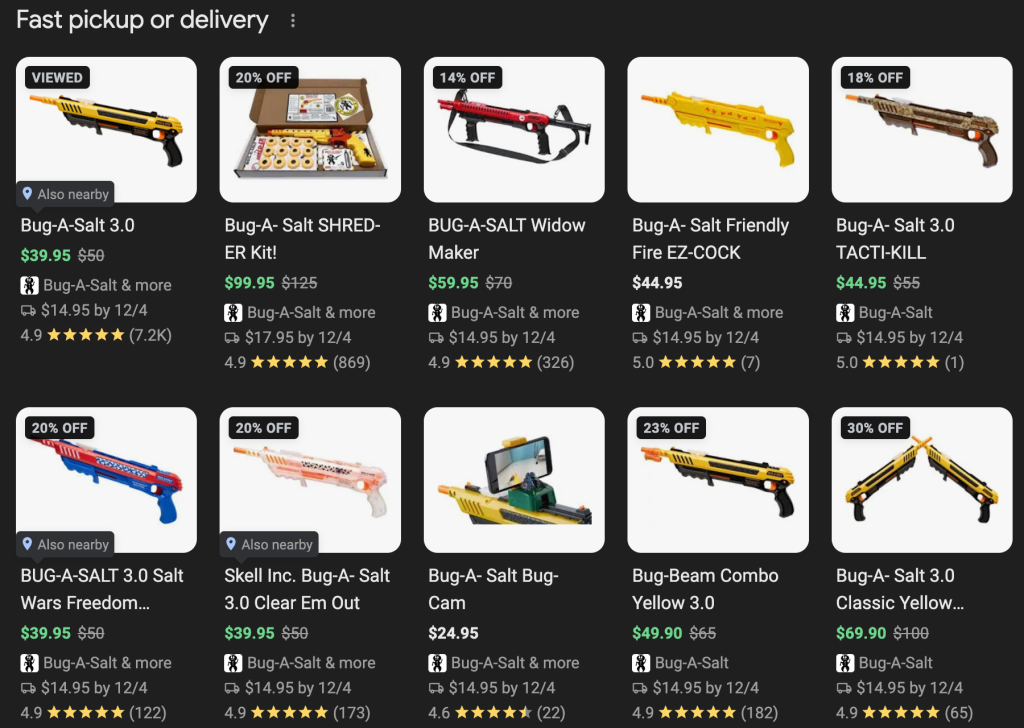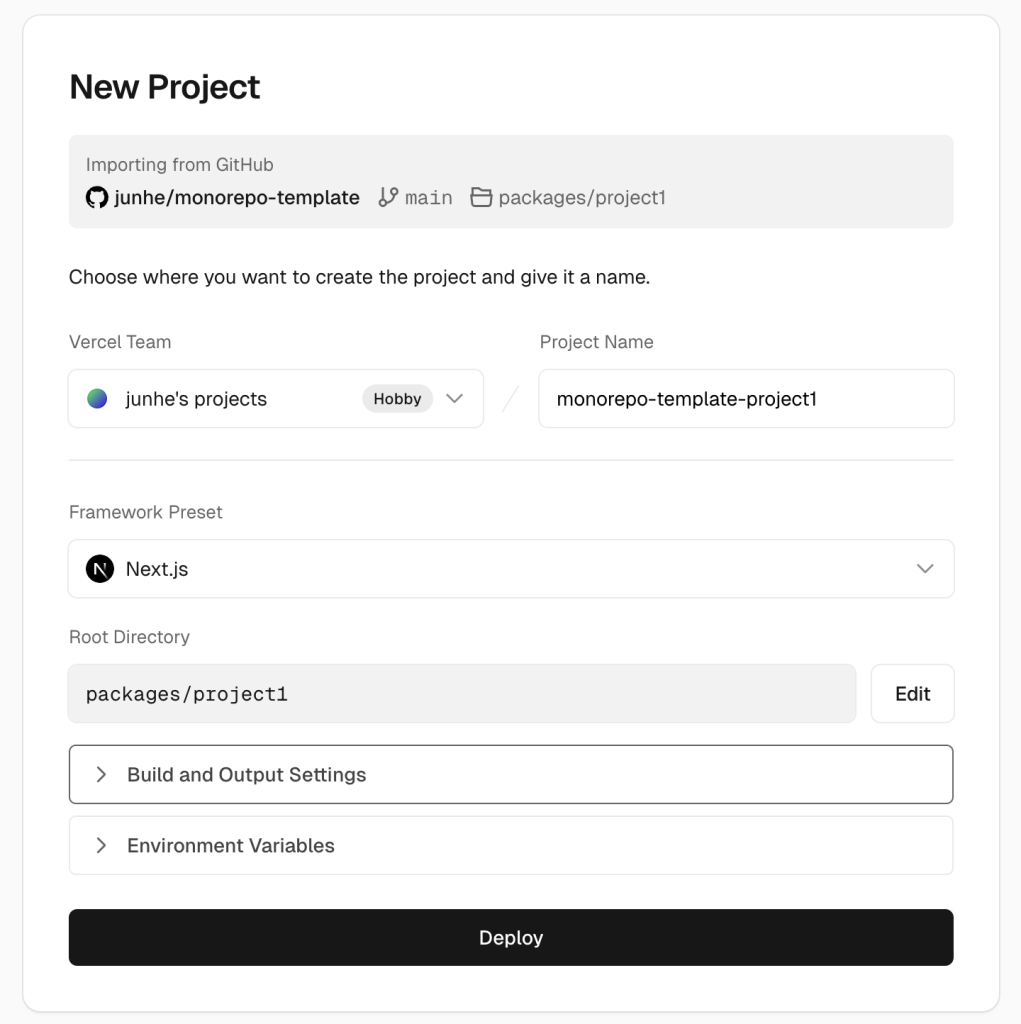There are a few single-product e-commerce sites. Let’s learn how they operate. This is for anyone who would like to start their own e-commerce business.
Bug-A-Salt
This is a brand that sells toy guns that shoots salt to kill flies and other home invaders.
Website
- Design: The website display a huge video with “over zoomed in” objects. The site features flies and half inappropriate mid-age guys. The guy in the video shoots flies with the toy gun.
- SEO: SEO is done well. Google was able to retrieve rich information about the site.

- Traffic: Impressively, the site has 10K visits/month. Many people searches “bug a salt” directly. This shows how successful the naming was: the name catches two important things in the story: bug and salt, which is a very weird and eye-catching combination.
- Google Ads: They do pay Google for their own brand name “bug a salt”.
- Customer Comments: the site does include a lot of customer comments.
Outlets
- They sell on Amazon, their own site, and many other sites.
Social Media
- Twitter (3k followers): not every active. There are less than 10 posts in 2024. Some of the posts talks about how dangerous bugs are.
- Youtube: not a ton of videos. Probably only 30 videos.
- Instgram (117K followers): very active on this channel. Interestingly, I see a video potentially copied from Chinese social media, with women eating bugs. They have a few videos like that. They definitely have a centralized theme, and many creative videos.
- Tiktok (221.9K followers): very actively creating contents, by real humans. Almost all their videos have good view counts.
I have to say this is a cool product. Men like me will definitely love it. In fact, after all this analysis. I want to buy it too.
Good product. Good marketing.
fromourplace.com
This site sells cookware.
Website
- Design. The design is well made with consistent and high quality pictures. They certainly try to offer a high-end feeling and sell at a high price.
- Customer Satisfaction: the site offers 1. free shipping, 2. 100 days trial, 3. free return. This really gives the customers a worry-free experience.
- Customer Comments: the site does display customer comments.
- SEO: Perfect Pots is the name of the pots they sell; this is a pretty generic name and the top results at Google is not it. They do buy Google Ads.
- Traffic: the site has 40K visits per month, which is very impressive. Many people directly search their brand name. I see backlinks from many shopping recommendation sites, there is even a link from New York Times. I bet it takes a lot of efforts to such a large audience.
Outlets
- They sell on their own site, Amazon, Target, and probably other places.
Social Media
- Instagram (800K followers): very active on Instagram.
- TikTok (350K followers): very active.
- Facebook (80K followers): not very active.
Most of the posts are sharing usage of the products.


